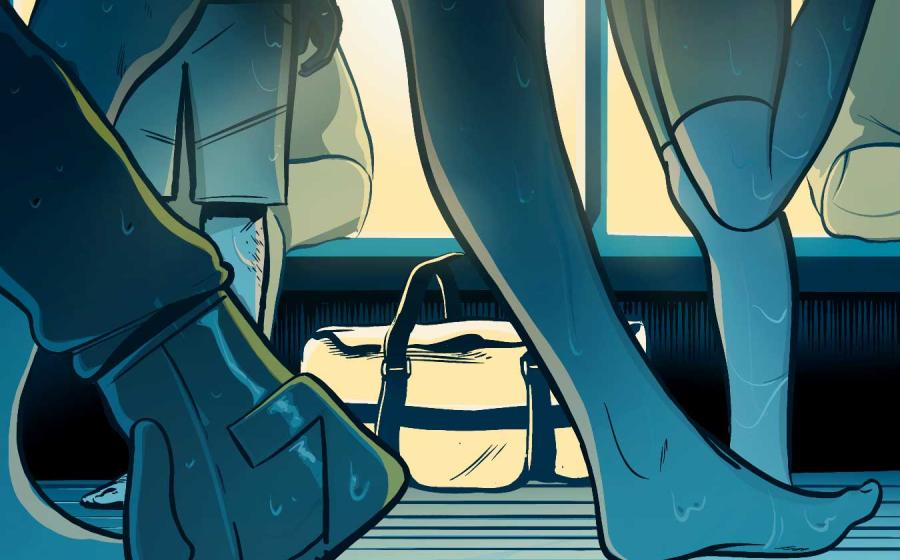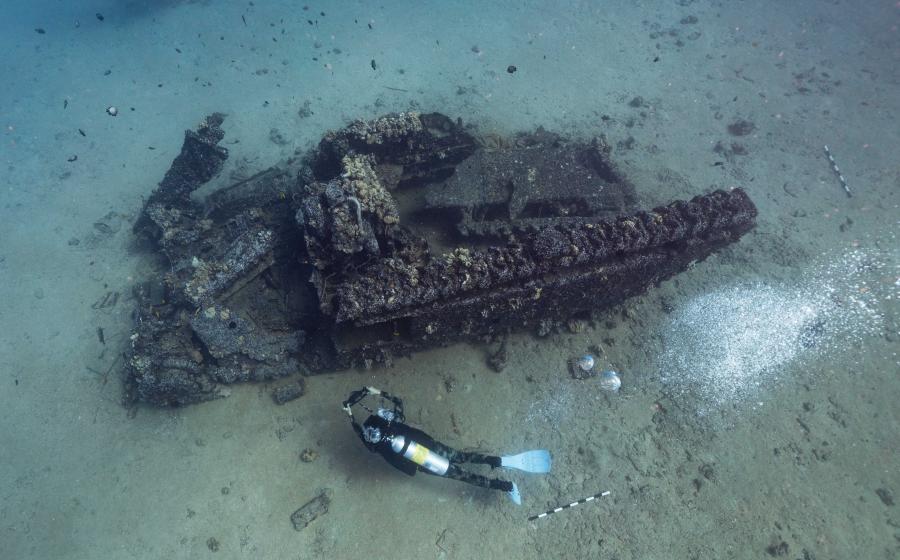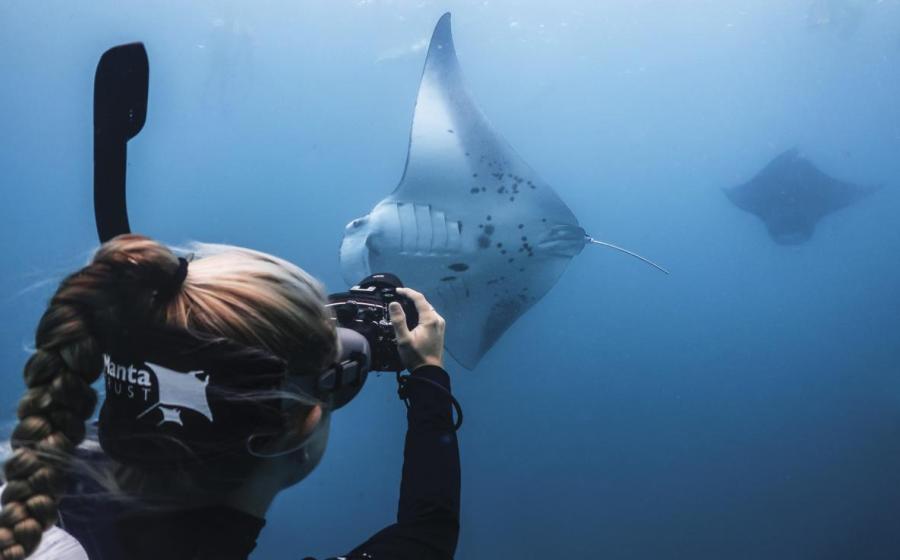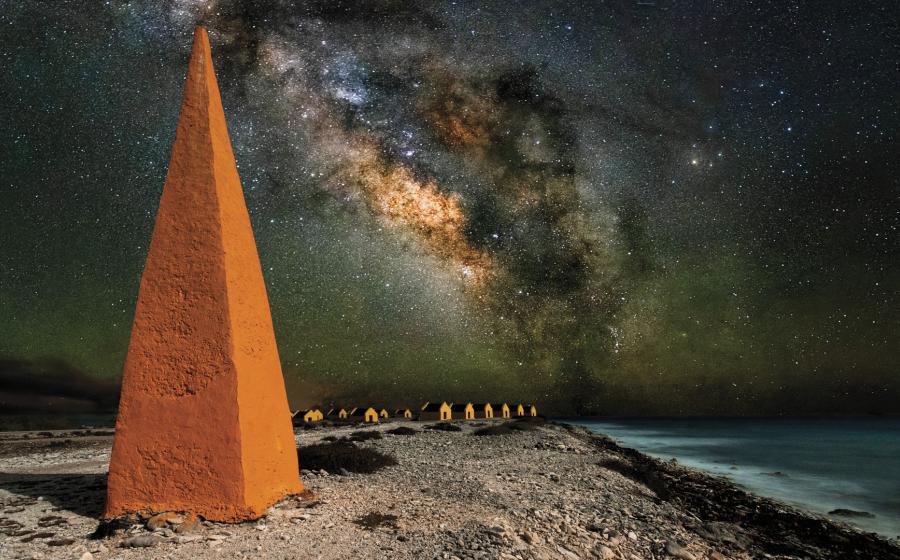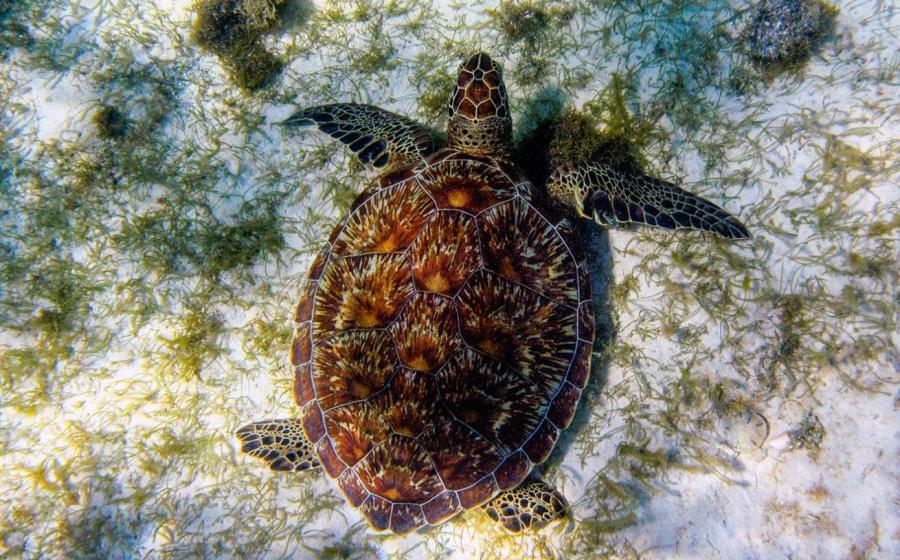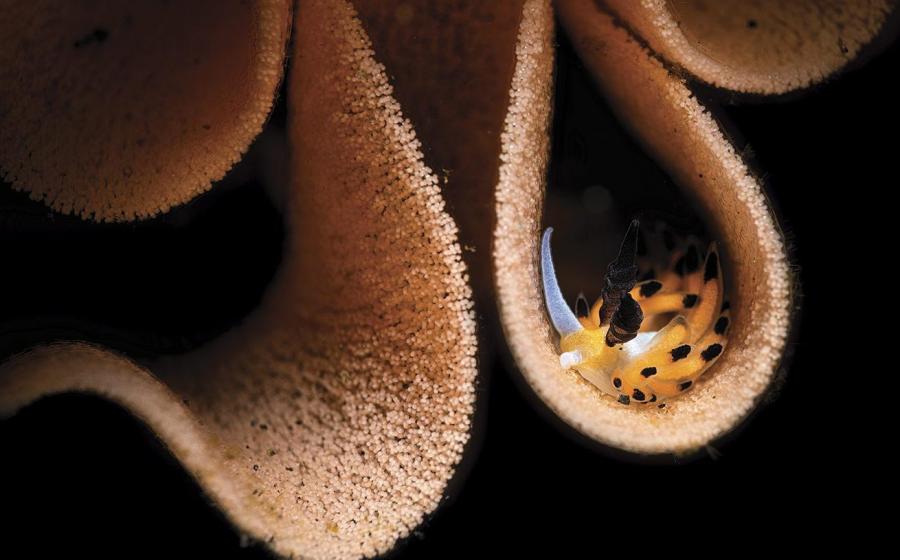Quick Guide to Marine Stings
May 2002
By Ernest Campbell
Seabather's Eruption
|Related Link|
|---|
| "Most Common Marine Life Stingers" chart|
What is seabather's eruption, and when should I worry about it?
-L John Schouls, Hamilton, Ontario, Canada
The skin condition known as seabather's eruption, also called swimmer's itch, appears by a swimsuit or wetsuit. Symptoms develop between two and 24 hours after exposure to the organisms that cause the condition and usually resolve within a week. Symptoms can also include nausea, vomiting, diarrhea, headache and muscle spasms.
Seabather's eruption can be caused by various organisms that produce larvae with nematocysts, including jellyfish, corals, sea anemones, hydroids and Portuguese man-o-wars. Outbreaks in the Caribbean and southern Florida are believed to be caused by the larval form of the thimble jellyfish.
Outbreaks of seabather's eruption occur intermittently between March and August in the Caribbean and southern Florida, but they appear to peak from early April through early July. There are many days when no infestations occur. Beachgoers should listen to local beach reports and read beach messages posted daily in affected areas.
In other tropical waters, seabather's eruption appears to be associated with periodic anemone larvae blooms, and can occur throughout the year. See our "Most Common Marine Life Stingers" chart of the animals that sting under water, and what to do about the associated injuries.
Diving on Hepatitis C Meds?
I take interferon and peginterferon, both of which are used to treat hepatitis C. Should I be concerned about diving?
-L Kathy Hansen
There are many different stages of hepatitis C, and it would be impossible to tell you whether you can dive without having access to your records and being able to examine you.
Interferon can cause side effects that can mimic the symptoms of a decompression accident. These can include any or all of the following: flu-like symptoms, fatigue, muscle pain and joint pain. Skin problems can include hair loss and dry skin-problems that can be increased by sun exposure. It also causes some immuno-suppression, which subjects you to the possibility of marine infections that are not ordinarily a problem.
The liver is affected by hepatitis C and can enlarge significantly in the early stages of the condition. An enlarged liver greatly exposes you to the risk of traumatic rupture of that organ. Diving generally should depend on the extent of the liver involvement and should be monitored closely by your private physician. For more information about hepatitis C and diving, go to www.scuba-doc.com/hepc.html.
Do I Have the Knee Bends?
After a Caribbean dive trip, a lump and a bruise appeared on the back of my knee. We made 17 dives in a week, including two morning dives on the day before the departure. A lump of one-inch diameter and one-half-inch high appeared with sharp pain on the back of my knee when I arrived home. The lump hurt when touched, and appeared to be filled with blood (dark blue). The next morning, a bruise appeared around the lump; the bruise is now about five inches in diameter. The lump still hurts when I touch it, but is no longer blue. I called Divers Alert Network and was advised that I don't have to worry about DCS. I wonder if I have gas trapped in the tissue at the back of my knee. What do you think?
-L Mina C. Kuhn, New York, N.Y.
First, we would agree with DAN that this is not DCS; nor is there the possibility of gas being trapped in the tissues behind the knee. There are no air-containing structures in that area, and any nitrogen in the body would have dissipated by the time you arrived home.
The most likely cause of the lump would be the rupture of a small superficial vein in the back of the knee caused by pressure from the airplane seat over a prolonged period of time. The small blood clot would then slowly spread into the subcutaneous fat, causing the bruise. This would have been more likely to occur if you have been taking aspirin or NSAIDS for some arthritic complaints.
I don't think this is a diving-related injury. Your doctor might want to run a few studies on your blood-clotting parameters just to be on the safe side.
Is Creatine Dangerous for Divers?
I have started a weightlifting program and am considering the use of creatine monohydrate as a supplement. I read that it's a "nitrogen-containing substance produced naturally in your body and is found in meat, poultry and fish." The scary words here, obviously, are "nitrogen-containing." Any worries that I'll increase my likelihood for getting bent if I use it?
-L Jay Russell, Ellicott City, Md.
Taking nitrogen-containing supplements will not affect your likelihood of developing decompression illness. In order to get bent, a diver has to have gaseous nitrogen in the tissues, and this is obtained from our breathing gas. Decompression sickness occurs when the tissues are saturated with nitrogen at depth and it comes out of solution as bubbles on ascent. The nitrogen in the supplements is molecular nitrogen and is not affected by the pressure changes of depth.
Ernest S. Campbell, M.D., FACS, is a retired surgeon, avid diver and web master of "Diving Medicine Online" (www.scuba-doc.com/).
May 2002
By Ernest Campbell
Seabather's Eruption
|Related Link| |---| | "Most Common Marine Life Stingers" chart| What is seabather's eruption, and when should I worry about it?-L John Schouls, Hamilton, Ontario, Canada
The skin condition known as seabather's eruption, also called swimmer's itch, appears by a swimsuit or wetsuit. Symptoms develop between two and 24 hours after exposure to the organisms that cause the condition and usually resolve within a week. Symptoms can also include nausea, vomiting, diarrhea, headache and muscle spasms.
Seabather's eruption can be caused by various organisms that produce larvae with nematocysts, including jellyfish, corals, sea anemones, hydroids and Portuguese man-o-wars. Outbreaks in the Caribbean and southern Florida are believed to be caused by the larval form of the thimble jellyfish.
Outbreaks of seabather's eruption occur intermittently between March and August in the Caribbean and southern Florida, but they appear to peak from early April through early July. There are many days when no infestations occur. Beachgoers should listen to local beach reports and read beach messages posted daily in affected areas.
In other tropical waters, seabather's eruption appears to be associated with periodic anemone larvae blooms, and can occur throughout the year. See our "Most Common Marine Life Stingers" chart of the animals that sting under water, and what to do about the associated injuries.
Diving on Hepatitis C Meds?
I take interferon and peginterferon, both of which are used to treat hepatitis C. Should I be concerned about diving?
-L Kathy Hansen
There are many different stages of hepatitis C, and it would be impossible to tell you whether you can dive without having access to your records and being able to examine you.
Interferon can cause side effects that can mimic the symptoms of a decompression accident. These can include any or all of the following: flu-like symptoms, fatigue, muscle pain and joint pain. Skin problems can include hair loss and dry skin-problems that can be increased by sun exposure. It also causes some immuno-suppression, which subjects you to the possibility of marine infections that are not ordinarily a problem.
The liver is affected by hepatitis C and can enlarge significantly in the early stages of the condition. An enlarged liver greatly exposes you to the risk of traumatic rupture of that organ. Diving generally should depend on the extent of the liver involvement and should be monitored closely by your private physician. For more information about hepatitis C and diving, go to www.scuba-doc.com/hepc.html.
Do I Have the Knee Bends?
After a Caribbean dive trip, a lump and a bruise appeared on the back of my knee. We made 17 dives in a week, including two morning dives on the day before the departure. A lump of one-inch diameter and one-half-inch high appeared with sharp pain on the back of my knee when I arrived home. The lump hurt when touched, and appeared to be filled with blood (dark blue). The next morning, a bruise appeared around the lump; the bruise is now about five inches in diameter. The lump still hurts when I touch it, but is no longer blue. I called Divers Alert Network and was advised that I don't have to worry about DCS. I wonder if I have gas trapped in the tissue at the back of my knee. What do you think?
-L Mina C. Kuhn, New York, N.Y.
First, we would agree with DAN that this is not DCS; nor is there the possibility of gas being trapped in the tissues behind the knee. There are no air-containing structures in that area, and any nitrogen in the body would have dissipated by the time you arrived home.
The most likely cause of the lump would be the rupture of a small superficial vein in the back of the knee caused by pressure from the airplane seat over a prolonged period of time. The small blood clot would then slowly spread into the subcutaneous fat, causing the bruise. This would have been more likely to occur if you have been taking aspirin or NSAIDS for some arthritic complaints.
I don't think this is a diving-related injury. Your doctor might want to run a few studies on your blood-clotting parameters just to be on the safe side.
Is Creatine Dangerous for Divers?
I have started a weightlifting program and am considering the use of creatine monohydrate as a supplement. I read that it's a "nitrogen-containing substance produced naturally in your body and is found in meat, poultry and fish." The scary words here, obviously, are "nitrogen-containing." Any worries that I'll increase my likelihood for getting bent if I use it?
-L Jay Russell, Ellicott City, Md.
Taking nitrogen-containing supplements will not affect your likelihood of developing decompression illness. In order to get bent, a diver has to have gaseous nitrogen in the tissues, and this is obtained from our breathing gas. Decompression sickness occurs when the tissues are saturated with nitrogen at depth and it comes out of solution as bubbles on ascent. The nitrogen in the supplements is molecular nitrogen and is not affected by the pressure changes of depth.
Ernest S. Campbell, M.D., FACS, is a retired surgeon, avid diver and web master of "Diving Medicine Online" (www.scuba-doc.com/).

